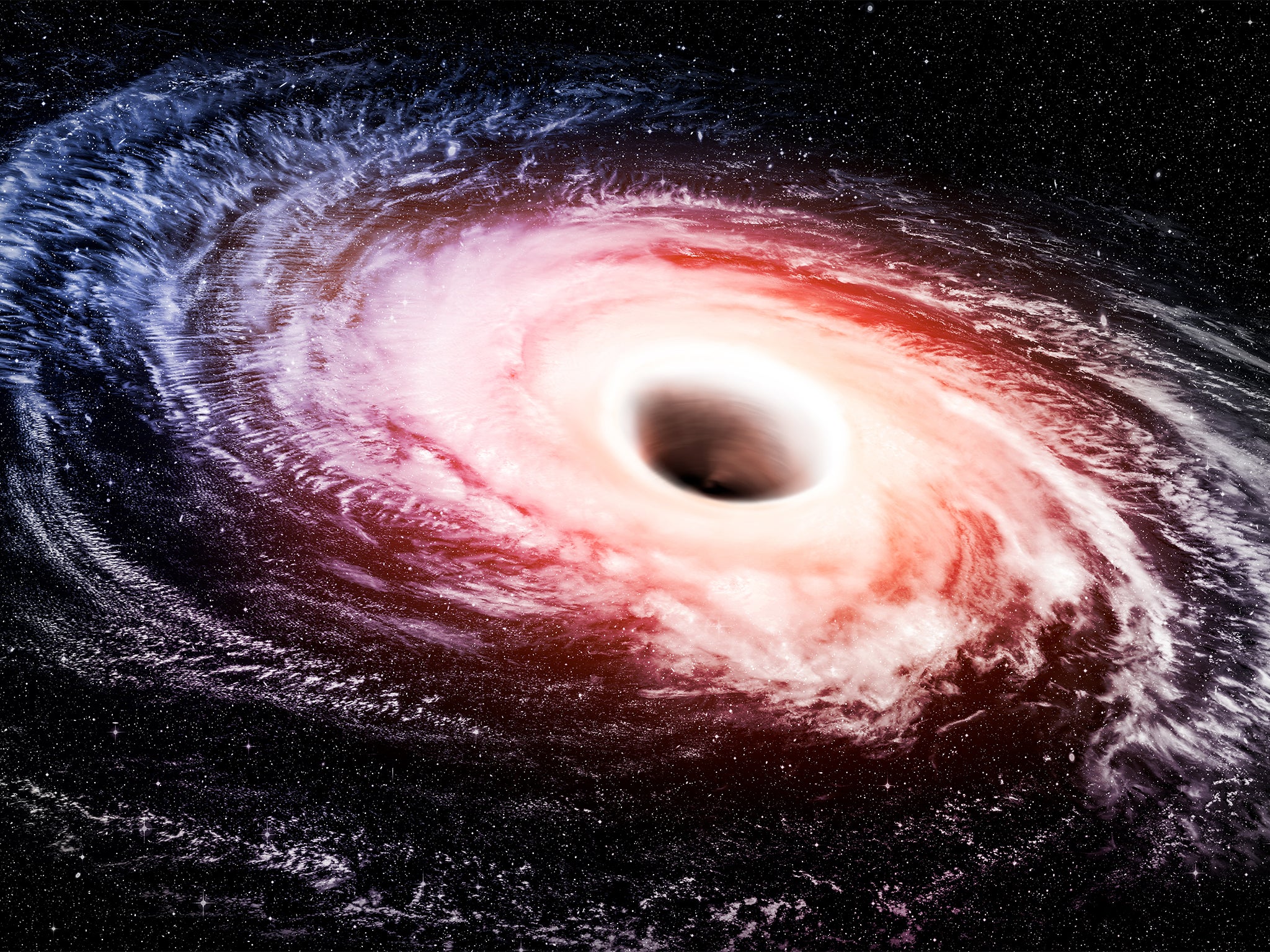Science news in brief: A black hole gorging on stars and spirit simulation
A roundup of other stories from around the world

Your support helps us to tell the story
From reproductive rights to climate change to Big Tech, The Independent is on the ground when the story is developing. Whether it's investigating the financials of Elon Musk's pro-Trump PAC or producing our latest documentary, 'The A Word', which shines a light on the American women fighting for reproductive rights, we know how important it is to parse out the facts from the messaging.
At such a critical moment in US history, we need reporters on the ground. Your donation allows us to keep sending journalists to speak to both sides of the story.
The Independent is trusted by Americans across the entire political spectrum. And unlike many other quality news outlets, we choose not to lock Americans out of our reporting and analysis with paywalls. We believe quality journalism should be available to everyone, paid for by those who can afford it.
Your support makes all the difference.Giant black hole eating ‘star every two days’
It is a truism of modern astronomy that every galaxy has a hungry heart. Astronomers in Australia now say they have found the hungriest heart in all the cosmos.
It is a black hole 20 billion times the mass of the sun eating the equivalent of a star every two days.
Christian Wolf, of the Australian National University, led a team that found it in the depths of time. The black hole is so bright, that it is dazzling our view and we can’t see the galaxy itself.
He and his colleagues announced the discovery in a paper that was to be published in the Publications of the Astronomical Society of Australia.
The black hole is growing so rapidly “that it is probably 10,000 times brighter than the galaxy it lives in.” He says.
How much body do you need in a virtual world?
How connected are your body and your consciousness?
Michiteru Kitazaki, a professor of engineering at Toyohashi University of Technology in Japan wondered if it would soon be possible to simulate the feeling of a spirit not attached to any particular physical form using virtual or augmented reality.
He wanted to figure out the minimal amount of body we need to feel a sense of self, especially in digital environments where more and more people may find themselves for work or play.
In a paper published recently in Scientific Reports, Kitazaki and a PhD student Ryota Kondo showed that animating virtual hands and feet alone is enough to make people feel their sense of body drift towards an invisible avatar.
Their work fits into a corpus of research on illusory body ownership, which has challenged understandings of perception and contributed to therapies like treating pain for amputees who experience phantom limb.
Researchers solve child’s mummified hand mystery
At first, János Balázs had no idea why the tiny hand he found in a storage box of bones was green and mummified.
More than a decade after his examination of an earlier archaeological dig in southern Hungary, Balázs and his colleagues think they have uncovered a unique form of mummification, published recently in Archaeological and Anthropological Sciences.
From inspecting the tiny skeleton, Balázs determined the deceased was either a stillbirth or premature baby that died shortly after birth.
Bronze or copper jewellery can often discolour skeletons as they degrade. The team concluded that before the child was placed in a pot and buried, someone put a copper coin into its hand.
Many cultures in antiquity have buried their dead with coins as a way to pay a mythical ferryman to take their souls into the afterlife. In his case, the copper’s antimicrobial properties protected the child’s hand from decay.
Scientists transfer memories between snails

In a paper published recently in the journal eNeuro, scientists at the University of California reported that when they transferred molecules from the brain cells of trained snails to untrained snails, the animals behaved as if they remembered the trained snails’ experiences.
The scientists realised that even when they interfered with their trained snails’ brain cells in a way that should have removed the memory completely, some vestige remained.
They decided to see whether something beyond the brain cells’ connections to each other – namely, RNA – could be hanging on to the memory.
When the researchers gave the new snails a drug that keeps chemical tags from being added to DNA, the memory did not transfer.
That suggests that what they are seeing is in fact related to memory, and not something else to do with the influx of new RNA.
Mutated gene could hold key to ageing
Once there was a mutant worm in an experiment. It lived for 46 days. This was much longer than the oldest normal worm, which lived just 22.
Researchers identified the mutated gene that had lengthened the worm’s life, which led to a breakthrough in the study of ageing. Later, as researchers studied these processes, all signs seemed to point to the nucleolus.
You’ve got one in every nucleus of every cell in your body, too. They’ve become much more important in our understanding of how cells work.
Adam Antebi, a cellular biologist at the Max Planck Institute for Biology of Ageing in Germany is an author of a new review published in Trends in Cell Biology that examines all the new ways that researchers have fallen in love with the nucleolus – especially its role in ageing.
The nucleolus can wax and wane in response to a body’s available nutrients and growth signals.
© New York Times
Join our commenting forum
Join thought-provoking conversations, follow other Independent readers and see their replies
Comments